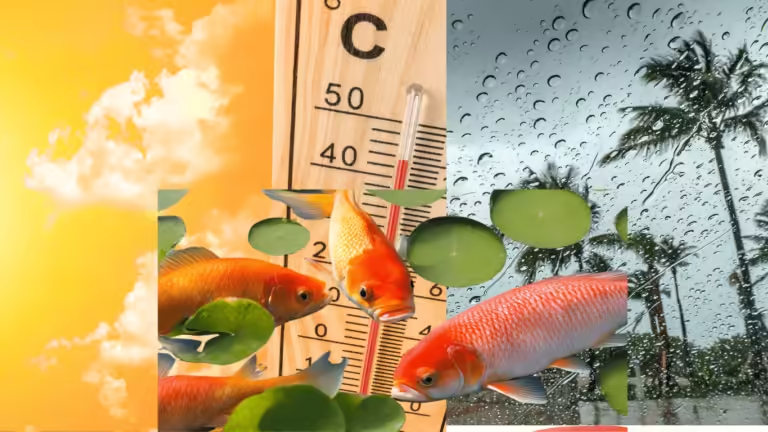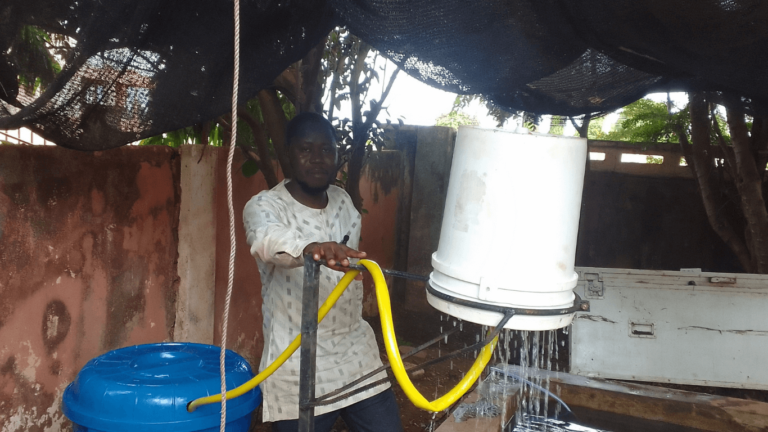Improving fish survival rates during extreme weather is a crucial concern for fish farmers, especially as climate change increases the frequency of unpredictable weather patterns. Whether you’re dealing with excessive heat, cold, storms, or droughts, it’s essential to protect your fish from the negative impacts of these environmental changes. Extreme weather can stress fish, decrease oxygen levels, and lead to high mortality rates if preventive measures aren’t in place.
In this post, we will explore strategies for improving fish survival rates during extreme weather events, offering practical tips and recommendations to help fish farmers protect their investments and maintain the health of their fish stock.
Understanding the Impact of Extreme Weather on Fish
Fish are cold-blooded animals, which means their body temperature and metabolism are directly influenced by the water around them. When extreme weather occurs, such as heatwaves, cold spells, or heavy rainstorms, fish experience stress that can disrupt their physiological functions. This can lead to reduced feeding rates, slower growth, weakened immune systems, and even death.
Temperature Fluctuations
Sudden increases or decreases in water temperature can cause fish to become stressed, making them more susceptible to disease and lowering their chances of survival. High temperatures can also lead to reduced dissolved oxygen levels in the water, which is crucial for fish respiration.
Storms and Heavy Rains
During heavy storms, ponds can overflow, introducing contaminants or washing away stock. Flooding can also cause a rapid drop in water quality, while heavy rains can reduce the temperature of surface water, causing stress for fish that are used to stable conditions.
Droughts
Low water levels during droughts can result in increased stocking density, which reduces water quality and oxygen availability.
Fish in crowded, shallow conditions may experience more competition for oxygen and food, increasing their risk of mortality.
Best Practices for Improving Fish Survival Rates During Extreme Heat
Extreme heat presents one of the most common and dangerous challenges to fish farmers. High temperatures can reduce dissolved oxygen in water, elevate fish metabolism, and lead to excessive algae growth. All of which can endanger fish health. To improve survival rates during heatwaves, the following steps can be taken:
1. Increase Aeration
Aeration is essential during periods of extreme heat. As water temperature rises, dissolved oxygen levels decrease, which can suffocate fish.
In my fish farm, I always observe that when the weather is hot, the functioning of the aeration system reduces as compared to when there is stable weather.
So, installing additional aerators or increasing the usage of existing aeration systems will ensure that oxygen levels remain sufficient to support fish respiration.
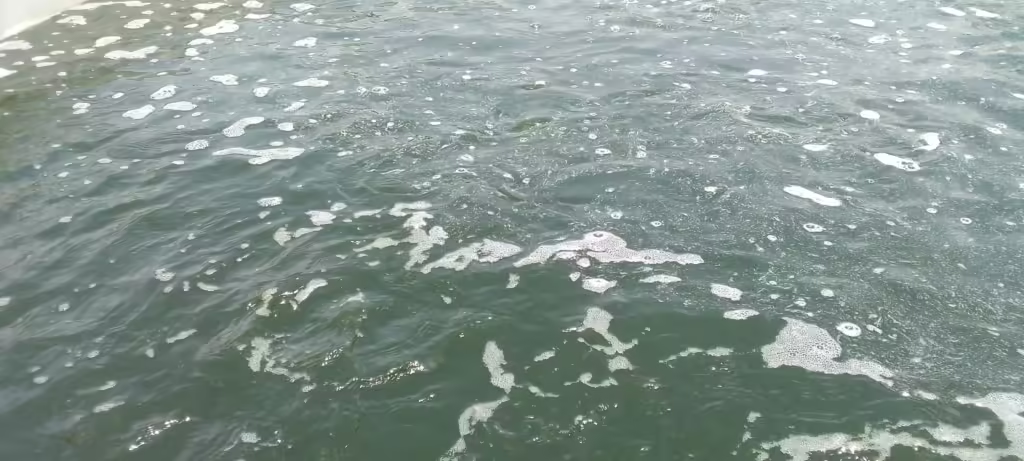
Aeration working
2. Provide Shade
Creating shaded areas within fish ponds can help reduce the water temperature. You can install floating covers or structures that block direct sunlight from hitting the water. Plants such as water lilies or other aquatic vegetation can also provide shade while enhancing the pond’s ecosystem.
You can also use shade nets to protect your farm from excessive sunlight. This will help lower the temperature and reduce stress on the fish.
3. Lower Stocking Density
Reducing the number of fish in your ponds during hot weather can help improve oxygen availability and reduce competition for resources. By lowering stocking density, each fish has more space, which helps reduce stress and minimizes the risk of fish kills.
From my experience, this can even make the fish grow bigger.
4. Monitor Water Quality Frequently
During heatwaves, the likelihood of rapid changes in water quality increases. Regular monitoring of water temperature, pH levels, ammonia, nitrites, and nitrates is crucial. Keeping an eye on these parameters allows you to take corrective action before conditions become lethal for your fish.
Strategies for Improving Fish Survival Rates During Extreme Cold
Cold weather, especially during winter, can also have adverse effects on fish. In colder climates, extreme drops in water temperature can slow down fish metabolism, making them lethargic, reducing their appetite, and compromising their immune systems.
Implementing protective measures can help fish survive harsh winter conditions. And also during extreme harmattan season as part of Africa.
1. Insulate the Pond
One of the most effective ways to protect fish during cold weather is to insulate the pond. This can be done by using windbreaks such as trees or man-made barriers around the pond to reduce the impact of cold winds.
Installing floating covers or tarpaulins over the pond can also help retain heat and prevent rapid cooling.
2. Use Heaters or Warm Water Circulation
For fish species that are highly sensitive to cold temperatures, using pond heaters or warm water circulation systems can help maintain a stable environment. These systems regulate the water temperature, preventing it from dropping too low and creating a more comfortable habitat for the fish.
3. Feed Fish Less
Fish metabolism slows down in cold water, which means they require less food. Overfeeding during winter can lead to uneaten food accumulating in the pond, which can deteriorate water quality.
Therefore, reducing feeding during cold spells can help prevent water quality issues and ensure that fish remain healthy.
In order to experiment with this, I tried to feed my fish during a cold day, during a hot day, and during a normal day. The reaction of the fish varied in each condition. You may want to check the video out on YouTube.
4. Deepen the Pond
Deeper ponds are less likely to experience extreme temperature changes because they have more stable water layers. If possible, consider deepening your pond or increasing the water volume to provide a more consistent environment for your fish.
I always observe that the fish on my farm move to deeper areas of the pond during cold or hot weather, where the water is more stable.
Preventing Damage from Storms and Heavy Rains
Storms, especially those with heavy rains and flooding, can wreak havoc on fish ponds. Rapid changes in water volume, the introduction of contaminants, and the potential for overflow can all put fish at risk. Here’s how to mitigate the damage
1. Install Overflow Protection
Proper pond design includes systems for managing excess water. Installing overflow drains or spillways ensures that ponds do not flood during heavy rains.
This helps prevent the loss of fish and protects against the introduction of harmful runoff from surrounding areas.
2. Reinforce Pond Banks
Heavy rains and flooding can erode pond banks, causing structural damage and potentially leading to pond collapse.
Regular maintenance of pond banks is crucial to prevent this. Consider reinforcing the banks with rocks, vegetation, or synthetic liners to reduce erosion and strengthen the pond’s overall structure.
This measure is applicable to an earthen fish pond system.
3. Secure Fish Stock
During storms, there’s always a risk that fish will be washed out of the pond. Installing netting or barriers around the pond can help prevent stock loss.
These structures also serve as a defense against predators that may become more active during extreme weather.
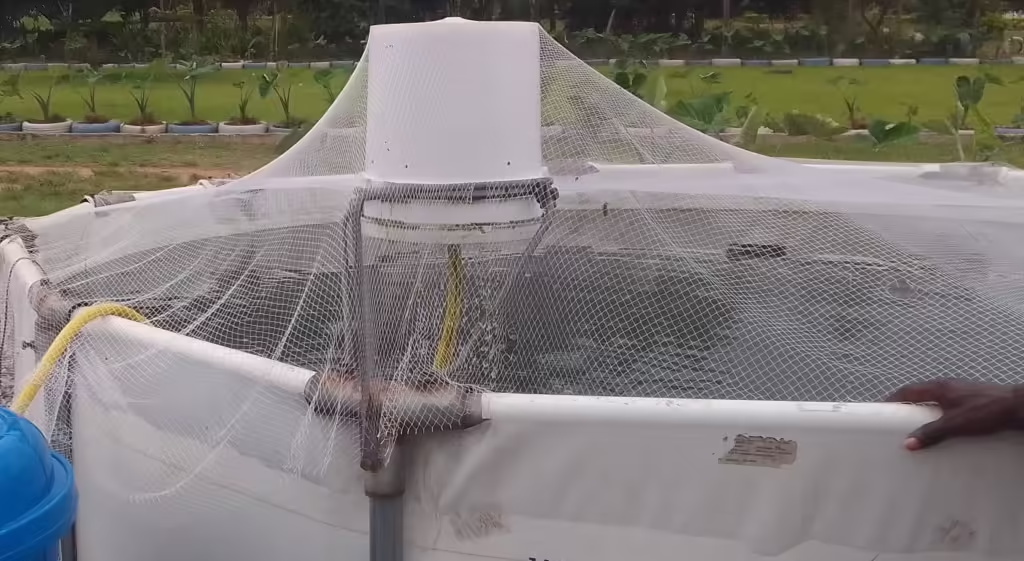
Fish pond covered with predation net
4. Check for Contaminants
Heavy rains can wash pesticides, fertilizers, and other harmful chemicals into ponds, affecting water quality. After a storm, it’s essential to test the water for contaminants and take steps to remove harmful substances.
This can be done through filtration systems or by adding beneficial bacteria that help break down toxins.
Coping with Drought Conditions
Drought conditions can reduce water levels, leading to overcrowding, reduced water quality, and increased stress on fish populations. To prevent these issues and ensure fish survival during prolonged dry periods, consider the following
1. Increase Water Storage Capacity
Fish farmers should have additional water sources on hand to supplement ponds during droughts. Installing reservoirs, rainwater harvesting systems, or boreholes can help ensure a steady supply of water, even when rainfall is scarce.
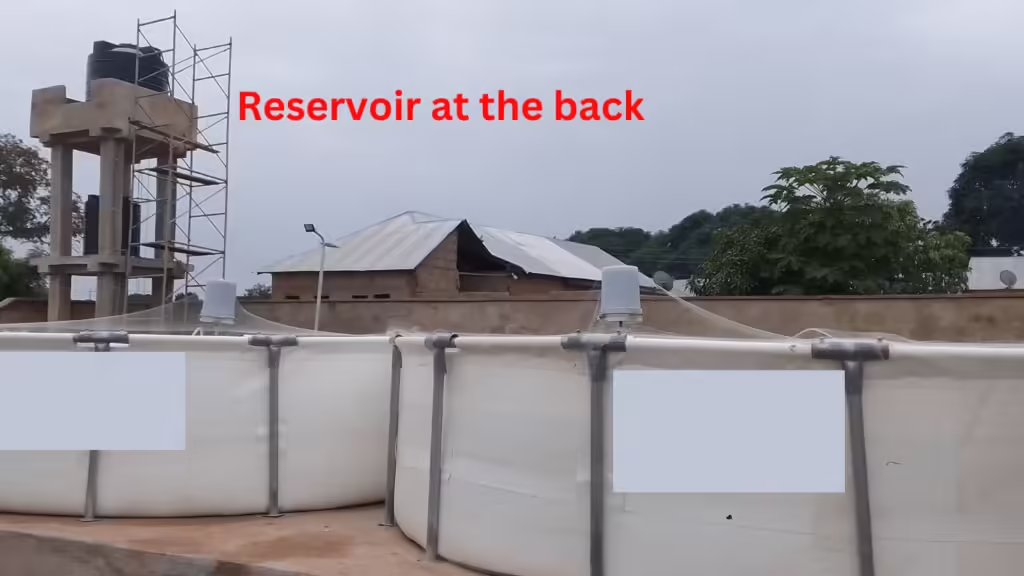
water storage in fish farm
2. Reduce Water Usage
Conserving water during droughts is vital to maintaining adequate levels in ponds. Using water-efficient methods such as recirculating systems can help reduce the amount of water lost to evaporation or waste.
Additionally, lowering water levels slightly during non-peak periods can help extend water resources without compromising fish health.
3. Improve Pond Depth
Deeper ponds provide more stable water temperatures and a more consistent environment during droughts.
By deepening ponds or excavating more volume, fish farmers can increase the water-holding capacity and improve the survival chances of their stock.
4. Monitor Water Quality
During droughts, water quality can deteriorate quickly due to higher concentrations of waste, algae, and pathogens. Frequent testing and management of ammonia, nitrate, and oxygen levels are necessary to prevent fish from experiencing undue stress.
Conclusion
Improving fish survival rates during extreme weather is essential for fish farmers who want to protect their investments and ensure the sustainability of their operations.
By understanding the impacts of extreme weather and implementing preventive measures—such as increasing aeration, providing shade, insulating ponds, and maintaining water quality—farmers can significantly reduce the risks posed by heatwaves, cold spells, storms, and droughts.
Through careful planning and proactive management, it’s possible to keep fish healthy and resilient, even in the face of climate change and unpredictable weather patterns.
By implementing the strategies discussed in this post, fish farmers can enhance the survival rates of their stock and create more stable, weather-resilient aquaculture systems.
You can also read more on the topic at the International Journal of Aquaculture and Fishery Sciences website.


